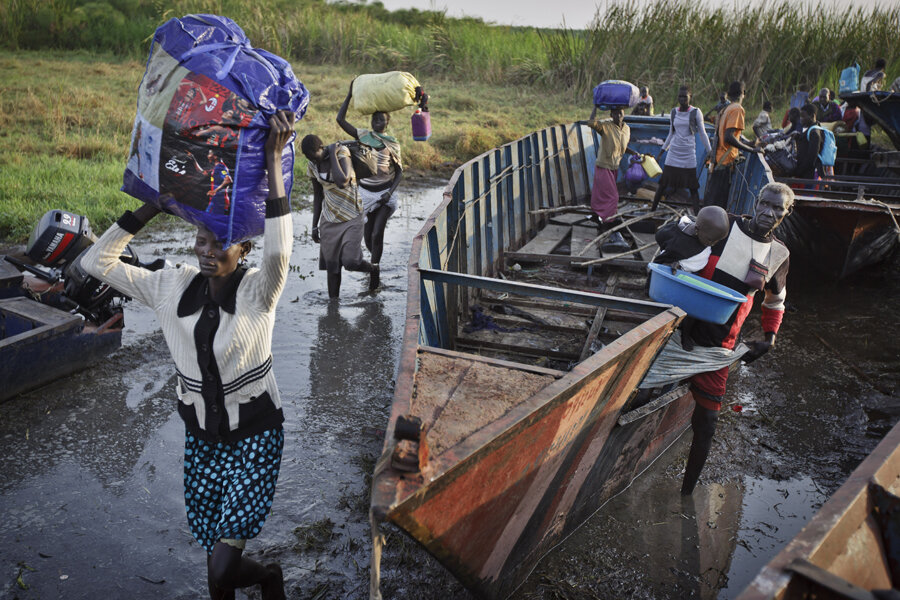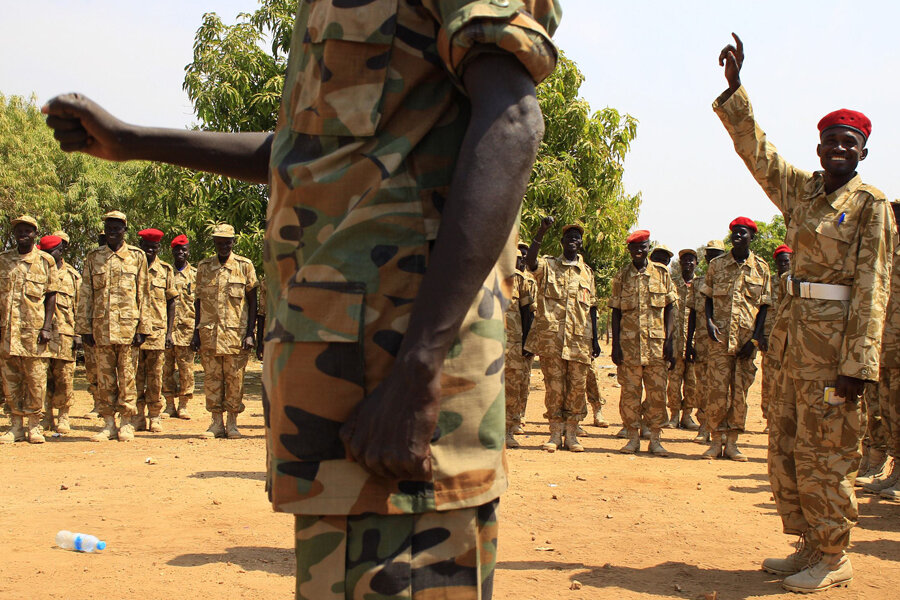South Sudan: 8 key developments
A version of the post originally appeared on the Lesley on Africa blog. The views expressed are the author's own.
I’m in the process of transitioning from my current assignment back to The Mothership this month.
From what I can ascertain, here are some important developments unfolding in South Sudan over the past two weeks:
- Since mid-December, 189,000 South Sudanese have become internally displaced persons (IDPs) and 22,600 have become refugees in neighboring Kenya, Ethiopia, and Sudan.
- Negotiations to end the crisis have gotten under way in Addis, and are said to be focusing on a cessation of hostilities and the release of the nine remaining political prisoners held by the government of South Sudan for their complicity in the alleged coup attempt in December.
- South Sudanese civil society organizations marched for peace in Juba this week, demanding that warring parties end the conflict.
- In a complete surprise (sarcasm) to anyone who watches Central Africa and the Horn, Ugandan President Yoweri Museveni (M7) sent the Uganda People’s Defence Force (UPDF) to “help evacuate Ugandan nationals” in late December. M7 subsequently declared that East African nations would move in to defeat Riek Machar if he did not accept the government of South Sudan’s ceasefire offer. Back in 2012 when Museveni likewise threatened to intervene in a hypothetical large-scale conflict between Sudan and South Sudan, I wrote a post explaining M7′s motivations, and I think many of these motivations are still valid today. In any event, M7 is now being asked by the Ugandan parliament why he failed to secure parliamentary approval before deploying the UPDF to South Sudan.
- Sudanese President Omar al-Bashir visited Juba earlier this week. Although initial reports stated that Sudan and South Sudan had agreed to a joint military force to protect South Sudan’s oilfields, it now appears that Sudan is sending 900 technicians to help run the oilfields – positions that were likely vacated by the evacuation of foreign oil workers in December. For additional insight on Sudan’s equities in the current crisis in South Sudan, I recommend reading posts by Magdi el Gizouli and Aly Verjee. Many of us have been wondering what role Sudan might play in the crisis given the ruling regime’s reliance on oil transport fees from the export of South Sudan’s oil on one hand, and its support for anti-SPLA armed groups from the mid-1980s until quite recently, on the other hand.
- Meanwhile, as @SamRosmarinaptly noted, SPLM-North, which has been fighting the government of Sudan in Blue Nile state and the Nuba Mountains since 2011, has been oddly quiet during all of this. The government of South Sudan had been supporting its civil war-era brothers-in-arms and the government of Sudan had been supporting various armed groups in South Sudan – but I’m not yet sure where SPLM-North is going to come into play in the current crisis, given Khartoum’s current support of the government in Juba.
- David Yau Yau, who had been leading a rebellion in Jonglei state since 2010 (with an amnesty period between June 2011 and April 2012), may have agreed to a ceasefire with the government of South Sudan. (Shameless Self Promotion: Read more about the government’s amnesty and integration approach to armed groups.) When instability broke out in Jonglei state in mid-December, the government of South Sudan was quick to extend Yau Yau a new offer of amnesty, possibly because it feared he would link up with the forces of serial SPLA defector Peter Gadet. This is, of course, not to assume that such an alliance would have been inevitable due to a history of tensions between the Murle (Yau Yau’s ethnic group) and the Nuer (Gadet’s ethnic group) and the fact that Gadet had been countering Yau Yau’s rebellion as part of his SPLA command until his defection in December.
- Spurred into action by the events of December 2013, a civil society initiative, Fresh Start South Sudan, came out with its Statement of Purpose. The initiative will officially launch in March 2014, and in the mean time, you can join here.
Here’s a few readings that have come highly recommended to me over the past few days. Full disclosure: since I haven’t yet gotten through all of these, consider this more of a “What I’m Reading” List:
- Breakdown in South Sudan by Alex de Waal and Abdul Mohammed
- South Sudan and the Prospects for Peace Amidst Violent Political Wrangling by Jok Madut Jok
- The Crisis in South Sudan by Lauren Ploch Blanchard
- The Way Forward in South Sudan by Mahmood Mamdani
- How the U.S. Triumph in South Sudan Came Undone by Colum Lynch
- No, the West Should Not Have Governed South Sudan by Ken Opalo
- African Union Missing in Action in Conflicts from Mali to South Sudan by Martin Plaut
- Crisis and Opportunity in South Sudan by Ambassador Princeton Lyman, Jon Temin, and Susan Stigant
- Comprendre la guerre suicidaire au Soudan du Sud (interview w/ Gerard Prunier, si vous lisez français)
Man, I have A LOT of reading to get done!







